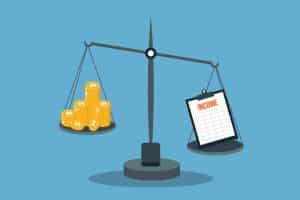IRS code 971 on your transcript means that the IRS has sent you a notice, generally indicating that more time or information is needed to resolve an issue. Notices can cover a wide range of topics, including tax return adjustments, document requests, and account changes. To respond to a transcript code (TC) 971 notice, you…
What is
What Is Inventory Control? Types, Techniques & Systems
Inventory control is the process of continuously monitoring and adjusting the quantity of product you are stocking to keep costs as low as possible while maximizing customer satisfaction and store profits. Though the principles of inventory control overlap with those of inventory management, the two are distinct: Inventory control is concerned with ensuring that there…
Purchase & Sale of Equipment Effect on Cash Flow Statement
The cash purchase price and sales price of equipment are both shown in the investing section of the cash flow statement. However, if all or a portion of an equipment purchase is financed, that portion has no cash flow effect and is excluded from the cash flow statement—but it is reported either as disclosure in…
What Is Inventory Aging Report & Why It Matters
An inventory aging report—also called an aged inventory report or stock aging report—is a financial document that provides key metrics on how quickly your inventory moves.
The report is essentially a list of the items on hand, grouped by the length of time in inventory. It helps with Identifying slow-moving and nonmoving products: The report highlights products that are either slow to move or not moving out of inventory. It helps you determine why certain products sit in inventory longer than…
What Is Customer Service? Scripts & Tips for Happy Customers
Customer service is the support you provide across the buyer’s journey from initial contact throughout the customer’s lifetime of doing business with your company. Customer service includes phone support, in-person assistance, live chat, email, and other means of communication. Its basic principles are understanding customer needs, processing requests, and resolving concerns promptly and to their…
Depreciation: What It Is & How It Works [+ Examples]
Depreciation in accounting and bookkeeping is the process of allocating the cost of a fixed asset over the useful life of the asset. The cost of the asset should be deducted over the same period that the asset is used to generate income instead of deducting a large expense when it’s purchased. This provides a…
What Is Debt-to-Income Ratio & How to Calculate It
Debt-to-income (DTI) ratio is a measure of your monthly debt obligations in relation to your monthly income. It’s calculated by taking the total dollar amount of your monthly debt payments, and then dividing it by your gross monthly income. Lenders often evaluate your DTI ratio to determine your eligibility for a loan and how much…
A Simple Explanation of Section 1245 Property With Examples
Section 1245 property is the depreciable personal property—like machinery, equipment, and furniture—that you have used in your business for over one year. It’s a subclass of section 1231 property, but unlike other 1231 property, gain on the sale of 1245 property must be recaptured as ordinary income to the extent that depreciation was claimed on…







